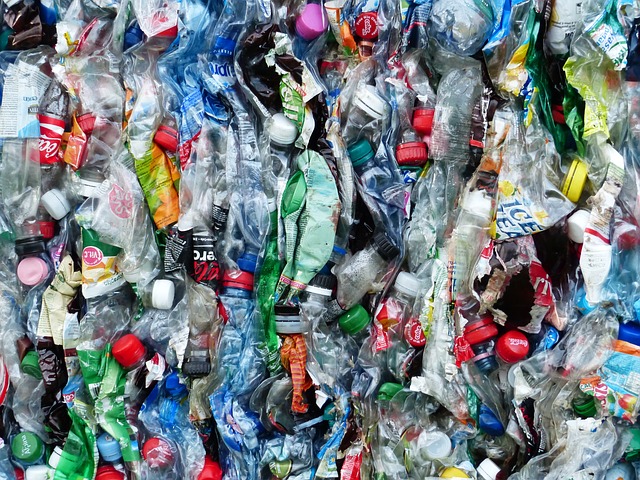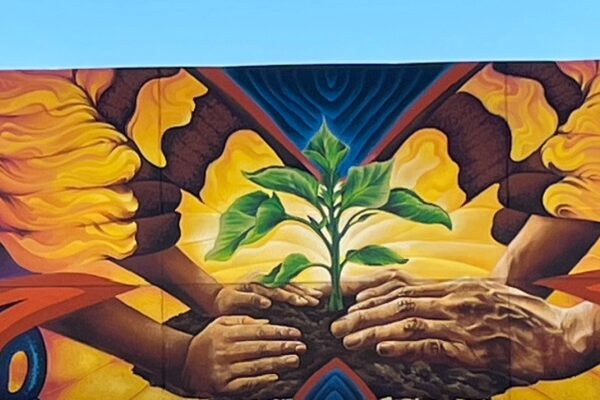Written by Sanju A.
(and posted very late by Cat, but hey! It’s Earth month!)
Global Recycling Day was on March 18th this year. Feeling inspired, I interviewed Kate Wilkins, an environmental scientist working on waste and recycling policy in California. I wanted to know more about common misconceptions about recycling, where our recycling products are going, etc.
 🧃❓Is it actually recyclable?
🧃❓Is it actually recyclable?
“What are some common misconceptions of recycling, like things people get surprised about when they know it’s not recyclable or it is recyclable?”
Kate answered that the items with the strongest markets are plastic bottles and soda cans with CRV labels. Glass, cardboard, and paper are also recyclable, but with weaker markets. There are lots of items that are technically recyclable, but they can only be recycled if there’s a market for it, meaning that someone has to want to buy whatever is being recycled. For example, we can be recycling a whole bunch of plastic bags, but if no one is buying plastic bags, then there is unfortunately no point in recycling them.
I also learned from Kate that shredded paper as well as plastic bags are NOT recyclable. Shredded paper, as long as it is in a paper bag stapled shut, can be recycled. That way, the shredded paper will less likely be contaminated by anything else in your recycling bin. Plastic bags especially were a surprise for me. They cannot be recycled because plastic bags and plastic film get wrapped up in the machinery (when being made into bales) and cause a whole lot of problems. Lesson learned: Do not put your recyclable items in a plastic bag or recycle plastic bags in general.
💡 Tip: The City of Sacramento Waste Wizard
If you live in the City of Sacramento, there is a wonderful tool called the Waste Wizard, which helps people see if an item is recyclable or not and how to recycle specific items.
If you live in another city, please check out your city’s website to see if they have a similar tool – if not, request one!
How to prep your recyclables
I recycle everyday, but I’m not 100% sure how to recycle certain items. So my next question was…
“How should we recycle common things, for example plastic? Do we need to wash it and dry it before we recycle it?”
Kate explained that if an object is dirty, rinse it and wipe it off with a sponge because then it’s less likely to contaminate something else. Since recycling is all in one bin for most households, if, for example, the peanut butter jar is with other plastics, then it’s no problem. However, since that jar is in the bin with paper and other objects, then the peanut butter can ruin the paper material, causing more contamination. The solution? Dump out any leftover contents, rinse it out, and then dry it. We want the recyclable objects to be clean and dry! That way, it does not go directly in the recycling facility’s trash bin.
Recycling Contamination
This type of contamination can happen in many ways, whether there’s food residue left on the recyclable material or when plastic bags get put in the bin. When instances such as these occur, there is a chance that the whole bin of items can be put in the landfill because of the cross contamination with unrecyclable materials with recyclable ones. Areas such as the Bay Area have implemented a system where there’s separate containers for different recycling items such as one for plastic bottles, and another for paper and on and on. This results in less contamination and higher likelihood of the materials being recycled.
Lessons Learned
All in all, I learned that many items cannot be recycled which is why it is crucial to use resources such as the Waste Wizard so we know that these materials are getting recycled. And since cross contamination is extremely common within recycling, it’s really important to recycle items that are clean and dry. Researching about recycling has made me more motivated to advertise the wonderful tools the City provides. It also inspired me to discuss this with my high school environmental club, friends and family in order to help reduce waste. Let’s save the planet one step at a time!
Sources
- City of Sacramento Waste Wizard
- City of Sacramento: What to Recycle
- Cheat sheet: Can you recycle that in Sacramento?
- a simple list of what can and cannot be recycled
- What is Recycling Contamination, and Why Does it Matter?
Summary of info via City of Sacramento table:
Paper
- Cardboard must be broken down(unfolded) and put in the recycle bin
- Office paper of any kind is recyclable
- Do not recycle shredded paper, used tissue, waxed paper or foil lined paper
Plastic
- Give cans, bottles and jars a quick rinse before recycling. Materials should be clean and dry.
- Laundry baskets, buckets, pails and crates can be recycled
- Plastic pots are good to recycle except remove dirt before recycling
- Do not recycle styrofoam or packing peanuts, plastic bags (put plastic bags in the trash), plastic cutlery, drinking cups(if no liquid in cup then recyclable otherwise must go in the trash)
Glass
- Give cans, bottles and jars a quick rinse before recycling. Materials should be clean and dry. Labels are okay.
- CRV (Beer and Soda Bottles are recyclable for California Redemption Value but take them to a local recycling center to get money)
- Remove lids off of bottles and jars
- Do not recycle window glass, light bulbs, crystals and lamps
Metal
- Cookware can be recycled, be sure to give it a quick wash with no food residue left
- Aluminum and tin cans can be recycled, no food residue left
- Empty aerosol cans are okay but full or partially full are hazardous waste
- Do not recycle electronic equipment or computers



